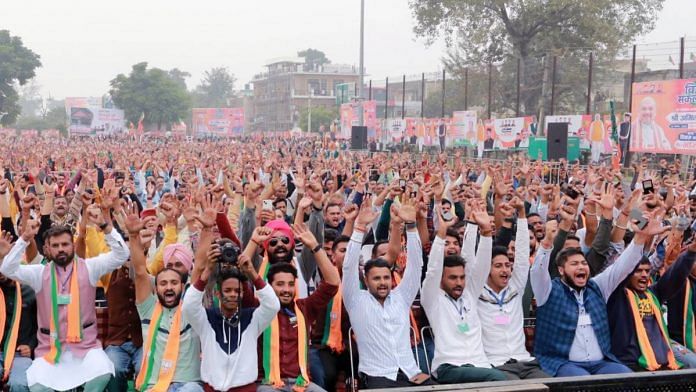New Delhi: The Bharatiya Janata Party’s (BJP) attempt to woo the Hatti community of Himachal Pradesh with a scheduled tribes (ST) status failed, as results from assembly elections have shown.
A day after the BJP lost the hill state to the Congress — winning 25 seats against the latter’s 40 — an analysis of the assembly elections results showed that the party failed to improve its tally in the state’s Hatti-dominated constituencies.
The move, which came on the back of a long-pending demand from the community, drew the wrath of the state’s Dalit communities, which account for 25 per cent of the state’s population.
Those protesting the move feared that the development would impact their own existing reservation.
Of the four Hatti-dominated seats in the Sirmaur district, the BJP retained Pachhad and Paonta Sahib — the two seats it had won in 2017. Meanwhile, the Congress held on to Sri Renukaji and Shillai — the seats it won in the last elections as well.
In Pachhad and Paonta Sahib, incumbent BJP MLAs Reena Kashyap and Sukhram Chaudhary held on to their seats with 21,215 and 31,008 votes.
Similarly, the Congress’ Vinay Kumar and Harshwardhan Chauhan also retained their seats of Sri Renukaji and Shillai by a margin of 860 and 382 votes.
Of the eight assembly seats in Shimla — another district where Hattis could influence election results — the BJP has won only one, Chopal. This is down from the three seats it had won in 2017.
Also Read: What explains three different outcomes — Delhi to Gujarat to Himachal
ST status for Hattis, resentment among Dalits
In Sirmaur district, Hattis account for nearly 30 per cent of the constituency’s vote share.
Primarily concentrated in the Trans-Giri region of Himachal between Tons and Giri rivers, Hattis get their name from ‘haat’ — a tradition of selling homegrown vegetables, crops, meat, wool, etc. at small markets.
The closely-knit tribe has been demanding ST status since 1967 after it was accorded to the Hattis living in Uttarakhand’s Jaunsar Bawar, which shares its border with Sirmaur.
Their demand for ST status has grown over the years, with the tribe passing multiple resolutions in maha Khumblis — traditional councils that take decisions on matters pertaining to the community.
In 2016, then Congress Chief Minister Virbhadra Singh had moved a file to the Union ministry of tribal affairs asking for tribal status to the trans-Giri region.
In September, the BJP, which first promised to accord Hattis the ST status in their 2009 election manifesto, finally delivered on it.
Even before the central government finally granted the community’s request, several scheduled caste organisations in Sirmaur’s Nahan held marches opposing any move to accord Hattis ST status.
Resentment among Dalits, in fact, is cited as one of the probable reasons for the BJP’s poor performance in the area.
As protests rose, Himachal Pradesh Chief Minister Jairam Thakur said in the ‘Hattee Aabhar rally’ in October: “It was an emotional issue for the Hattis which would benefit generations. Some opposition leaders were trying to mislead the SC community for political gain, although their concern has been addressed. Sirmaur was among the first four districts of the state and the first CM hailed from this district.”
In the same rally, Union home minister Amit Shah said: “I’m here to assure my Dalit brothers and sisters that none of their rights, whether reservation or under (prevention of) atrocities act, will be taken away”.
He added, “Fifty-five-year-old pain of the Hatti community was brought to an end by Prime Minister Narendra Modi, who has an emotional connect with Himachal. As many as 154 panchayats comprising 379 villages and 1.60 lakh people will benefit for generations from the ST status as they benefit from various reservation policies”.
(Edited by Uttara Ramaswamy)
Also Read: Buoyant Congress faces task of picking new Himachal CM. Here are 3 main contenders






